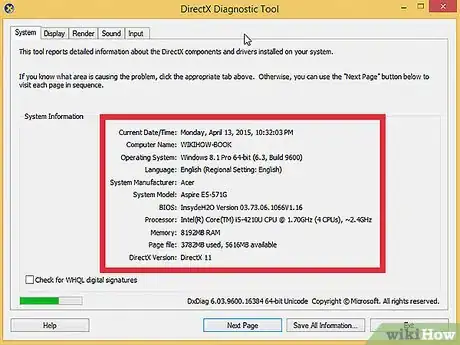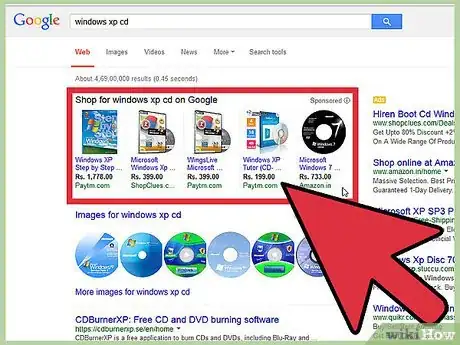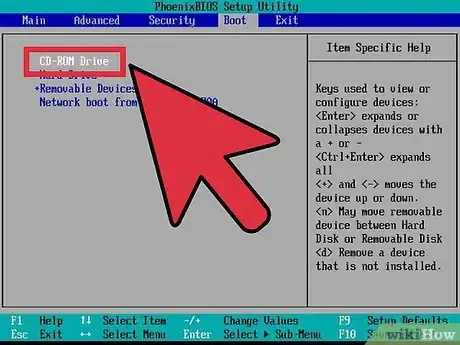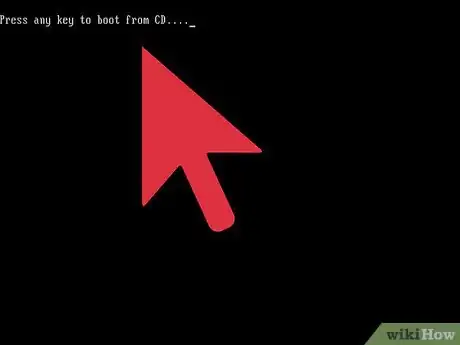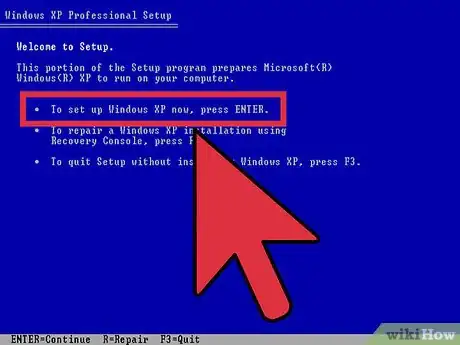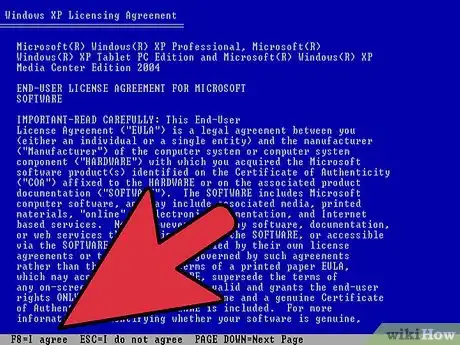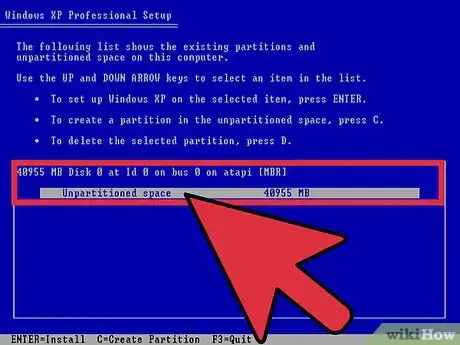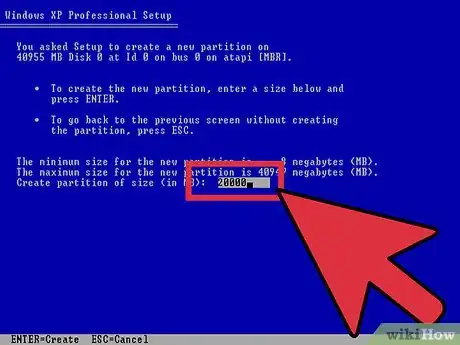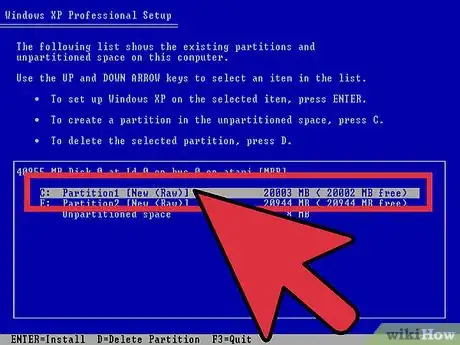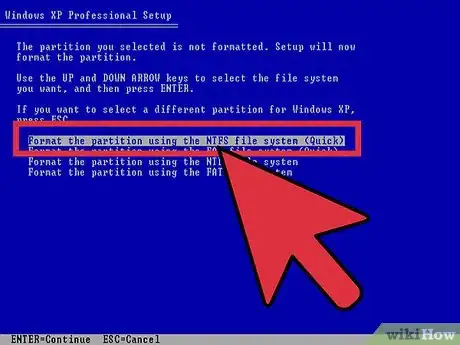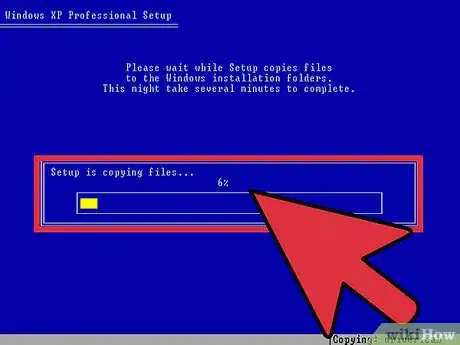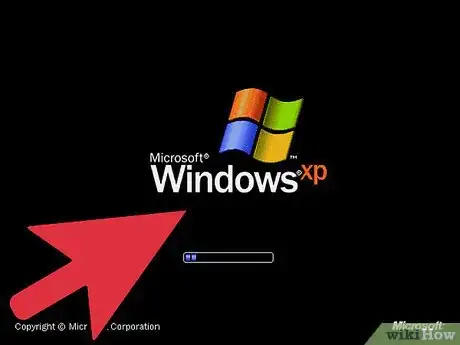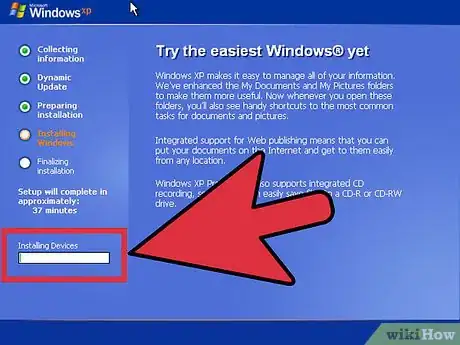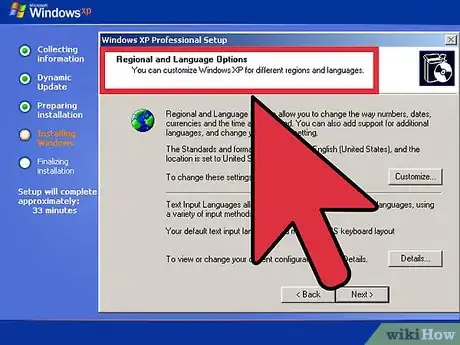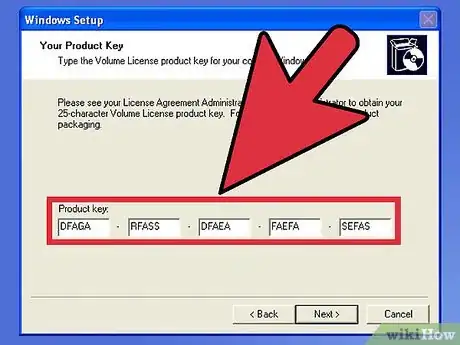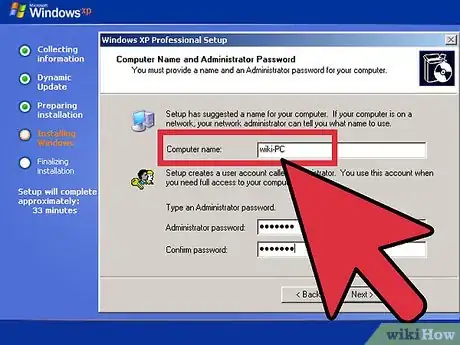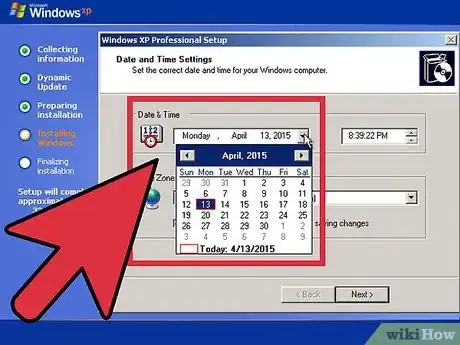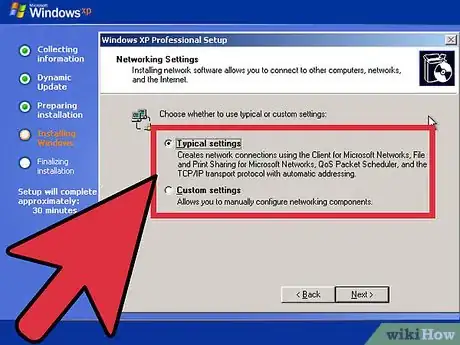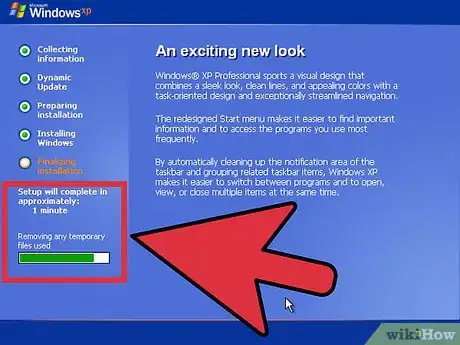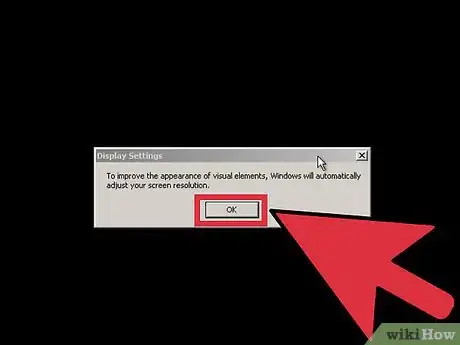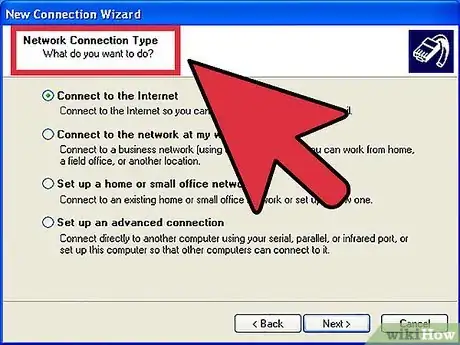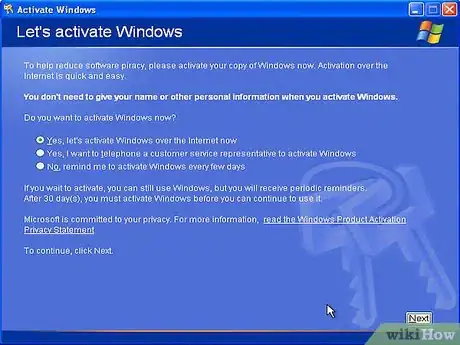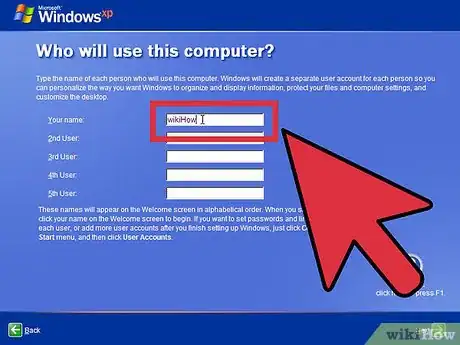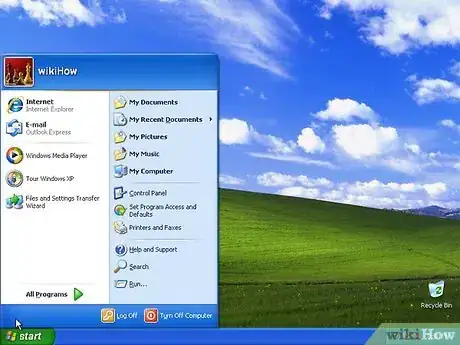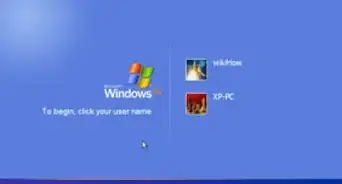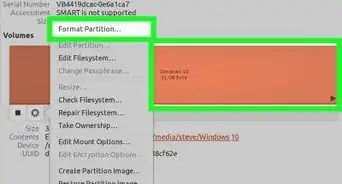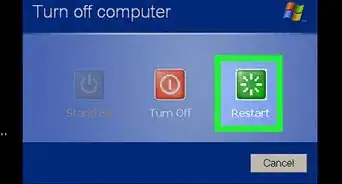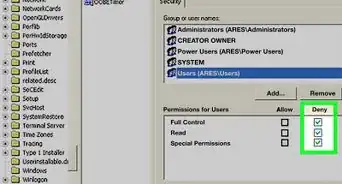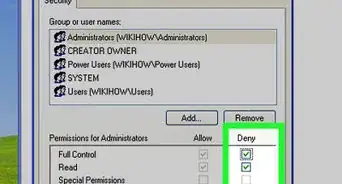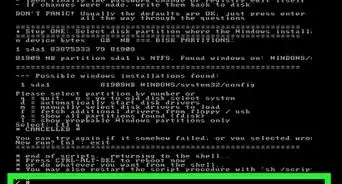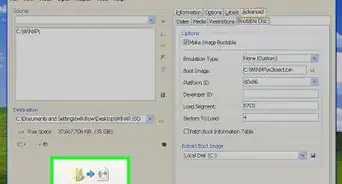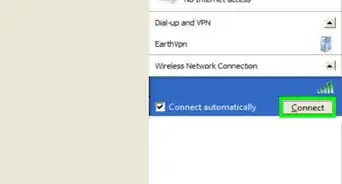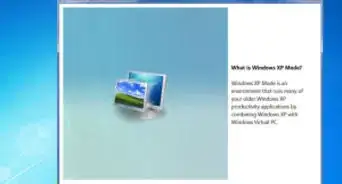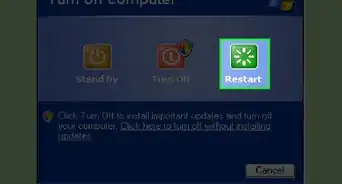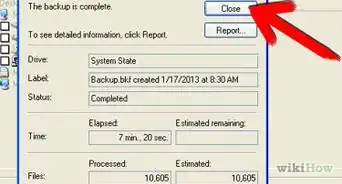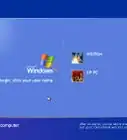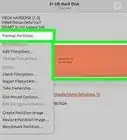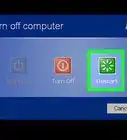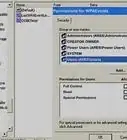This article was co-authored by Matt Ham. Matt Ham is a Computer Repair Specialist and the CEO and President of Computer Repair Doctor. With over a decade of experience, Matt specializes in Mac, PC, iPhone, iPad, and Smartphone repairs and upgrades. Matt holds a BS in Mechanical Engineering from North Carolina State University and an MS in Mechanical Engineering from Columbia University. Matt has expanded Computer Repair Doctor to seven different locations. He is also a Co-Owner of Repair Life, a full-scale marketing agency specializing in driving both online and offline leads to cell phone and computer repair shops and device retailers.
The wikiHow Tech Team also followed the article's instructions and verified that they work.
This article has been viewed 1,185,153 times.
Windows XP is one of Microsoft’s most popular operating systems, and though it’s starting to show its age, many people still use it exclusively. Whether you’ve got an old computer that you want to get functioning again or you want to install XP on your new machine, it will only take a short while.
- Note: Microsoft is no longer supporting Windows XP, which means it will no longer receive essential security fixes. It is highly recommended that you consider upgrading to a newer version of Windows, such as Windows 7, Windows 8, or Windows 10, as they actually run well even on old machines.
Steps
Setup
-
1Ensure that your computer can run Windows XP. Your computer will need to meet or exceed the minimum system requirements in order to run Windows XP. You can find your system information by either checking the computer manufacturer's manual, or by running DirectX Diagnostic on an existing Windows operating system of the computer.
- To start the DirectX Diagnostic, open the Run dialog (press WinKey+R simultaneously), type dxdiag, and click OK.
-
Minimum System Requirements for 32-Bit
- 300 MHz Intel or AMD CPU
- 128 megabytes (MB) of system RAM
- 1.5 gigabytes (GB) of available drive space
- Super VGA (800x600) or higher display adapter
- CD or DVD-ROM
- Keyboard and mouse, or other pointing devices
- Network Interface Adapter required for Internet and Network Connectivity
- Sound card and speakers or headphones
-
2Find your Windows XP Product Key. It is printed on a sticker on your software package or located on the computer itself. It is a string of 5 groups of characters (each 5 long), separated by dashes, resulting in 25 characters in all. You need the product key to complete installing Windows.Advertisement
-
3Set your computer to boot from CD/DVD. Before inserting the CD, you'll need to set your computer to boot from a CD instead of from the hard drive. This will allow you to load the Windows XP setup files before your computer boots to its installed operating system. You can change the boot order from the BOOT menu in your BIOS.
- To enter the BIOS of your computer, you usually press F9 or DEL when your computer starts or notifies you that you can enter "setup". Click the green "BIOS" link for more information. [1]
- In the BOOT menu, set the order so that your CD/DVD-ROM drive is set as the 1st Boot Device.
- If you are installing Windows XP from a USB drive, make sure that the USB drive is set as the 1st Boot Device. You may need to have the USB drive inserted for it to appear as an option.
Installation
-
1Load the installer. Once your Boot Order is set, insert the Windows XP CD into your drive and Save and Exit from the BIOS. Your computer will reboot and you will be presented with the message:
Press any key to boot from CD. Press any key on your keyboard to start the Setup program.- Setup will load files necessary to begin the installation, which may take a few moments. Once the loading is complete, you will be taken to the Welcome screen.
-
2Press ENTER to begin installation. Once the loading is complete, you will be taken to the Welcome screen. You are given several options, but if you are installing or reinstalling Windows XP, you’ll want to press ENTER to start the installation configuration.
-
3Read the License Agreement. This document tells you what you can and can’t do with Windows, and your rights as the consumer. After reading, press F8 indicating you agree to the terms.
-
4Select the partition you want to install on. You will see a list of available partitions on your installed hard drives. If you are installing Windows XP on a new hard drive, you should see only one entry labeled "Unpartitioned space." If you have a previous version of Windows or Linux installed on your computer, you will potentially have multiple partitions.
- Installing Windows XP will erase all of the data on the partition that you choose. Select a partition that is empty or that contains data that you do not care to lose.
- You can delete your partitions with the “D” key. This will return them to “Unpartitioned space”. Any data on the partition will be lost when it is deleted.
-
5Create a new partition. Select the Unpartitioned space and press “C”. This will open a new screen where you can set the partition’s size from the available space. Enter the size in megabytes (MB) for the new partition and then press ENTER.
- By default, the partition will be set to the maximum amount of available space. Unless you plan on creating multiple partitions, you can usually leave this at its default.
- Windows XP requires at least 1.5 gigabytes (1536 MB) for its installation files, but you will want more than this for programs, documents, downloads, and other files. 5 gigabytes (5120 MB) is a good baseline amount for Windows XP, with more if you plan on installing a lot of programs.
- You can create multiple partitions on a single drive. This can allow you to separate your programs from your movies and music, or to install another operating system. Windows XP can only be installed on one discrete partition.
-
6Select your new partition. Once you’ve created your installation partition, you will be returned to the partition selection screen. Select your new partition, usually labeled "C: Partition 1 [Raw]" and press ENTER.
-
7Select "Format the Partition using the NTFS File System" and press ENTER. NTFS is the preferred method, supporting a larger amount of disk space per partition than FAT, and including security features at the file system level. NTFS also includes system level compression. There are almost no situations anymore where choosing FAT would be preferable.
- If your partition size is larger than 32 GB, you will not be given the option to choose FAT.
- It is highly recommended to avoid Quick Format, as this skips an important process that checks the hard drive for errors or bad sectors. This scan is what consumes the majority of the time taken when performing a full format. If there are errors on a disk at the physical level, it's best to catch them now rather than later.
-
8Wait for the format to complete. The system will now format the partition. The length of time this process requires depends on the speed and size of the drive. In general, the larger the partition, the longer the process will take.
-
9Wait for the Setup files to copy. Windows will now start copying files from the installation disc and prompt you to reboot the computer when the process is completed. Press ENTER when prompted to reboot, otherwise it will do so automatically after 15 seconds.
-
10Allow the computer to boot normally. You will see the message asking you to press a key to boot from CD. Ignore it and allow the computer to continue booting from the hard drive. You will see the Windows logo as the Setup program loads.
-
11Wait for the installation to proceed. After the Windows logo goes away, you will see a list of steps remaining on the left side of the screen, and tips for using windows on the right. The time remaining for the installation will be displayed below the list of steps remaining.
- It is normal for the screen to flicker, turn on and off, or resize during this process.
-
12Choose your language and region settings. During the installation process a dialog window will appear, asking you to choose your Regional settings. Select appropriate settings native to your area. Click the Next button when that is completed.
- Enter your full name if you want. This will be set as the “owner” of Windows, and will be attached to certain things, such as Document creation.
-
13Enter your Product Key. You will not be able to complete the installation process without a valid Product Key. Click "Next" to continue.
- Some versions of Windows will not ask for the Product Key until installation is complete.
-
14Set your computer’s name. This will be the name that represents the computer on a network. Windows sets a default name, but you can change it if you would like. You can also set a password for the Administrator account. This is optional, but recommended for public computers.
-
15Select your time zone. Ensure that the date/time are correct. Click "Next" to continue.
-
16Choose your network settings. Almost all users installing Windows XP on a home or personal computer can leave "Typical Settings" selected for Network Setup. If you are installing Windows XP in a corporate or academic environment, check with the system administrator, though Typical Settings will most likely work.
- In the next window, nearly all users can select “No, this computer is not on a network, or is on a network without a domain.” If you are in a corporate setting, ask your system administrator which you should choose.
- You can typically leave the workgroup name set to default.
-
17Wait for the installation to finalize. This will only take a few minutes, and the computer will reboot when it is finished installing. Once the computer reboots, you will be taken to the Windows XP desktop. At this point, installation is complete, though there are a few things left to do before Windows is completely usable..
Completion
-
1Set your display preferences. Once Windows loads, you will be told that Windows will automatically configure your display. Click OK to start the configuration. Your screen will flash a couple times, and then you will be asked if you can read the box that appears.
-
2Set your connection preferences. If your computer is connected to the internet, select your connection type. Press Next to continue.
-
3Activate your copy of Windows. If connected to the Internet, Select "Activate Now." Windows will connect to the activation server and automatically authenticate your copy of Windows. If you haven’t entered your Product Key yet, you will need to enter it now.[2]
-
4Create Users. After the Activation Process, a window will appear allowing you to select the users for the computer. Enter your name, and the names of others who will be using the machine. Press Next to continue.
-
5Start using Windows. You will now be looking at the default Windows XP Desktop. Congratulations! There are a few things that you should probably do now that you have Windows up and running:
- Install any drivers that you need to for your computer’s hardware.
- Install an antivirus program if you are connected to the internet.
- Set your BIOS to boot from the hard drive again instead of the CD.
Community Q&A
-
QuestionHow do I install Windows on a drive other than C:?
 Community AnswerOn the Choose Drive option, you should see your other drives. You can format them or erase their partitions so you can install Windows to those.
Community AnswerOn the Choose Drive option, you should see your other drives. You can format them or erase their partitions so you can install Windows to those. -
QuestionCan I install Windows XP without being connected to the internet?
 Tjbotha41Community AnswerYes, you can, if you have the install disk or a bootable flash drive for Windows XP.
Tjbotha41Community AnswerYes, you can, if you have the install disk or a bootable flash drive for Windows XP. -
QuestionCan we do Windows 7 and Windows XP in a single computer and have a common hard disk?
 Community AnswerYou can. Just identify which partition has Windows 7, and don't install XP on it.
Community AnswerYou can. Just identify which partition has Windows 7, and don't install XP on it.
Warnings
- Some users installing Windows XP from disks with Service Pack 2 or below experience issues during the early stages of install on modern computers, characterized as never-ending reboot loops, or a Blue Screen Error (BSOD). This is due to some disks lacking a driver for SATA hard drives. In order to fix this, the user will have to slipstream the drivers to a copy of the install CD, or put the required drivers on a floppy disk and manually add them to the install list.⧼thumbs_response⧽
- You can install Windows more than once on a single partition, but this may lead to system instability in the future. Download software such as Partition Magic 8, to safely divide the hard drive into partitions for safe install.⧼thumbs_response⧽
- Be sure to Activate Windows within 30 days of installation, otherwise the system will not allow you to log on until Activation is complete.⧼thumbs_response⧽
- Do not attempt to install Windows on a system that does not meet the minimum requirements.⧼thumbs_response⧽
References
About This Article
To install Windows XP on a Windows computer, you'll need a Windows XP installation CD. Insert the CD, then set your computer to boot from the CD drive by opening the BIOS and changing the boot order to place the CD drive at the top of the list. Once you restart your computer, it will open to the Windows XP installation menu; fill out each form and follow any on-screen prompts to install XP.
